|
Tai San Monument |
Yi San Monument |
Lan Ye Tai Monument |
Chin (221 - 207 B.C.) & Han (206 B.C. - 220 A.D.) Dynasties
When Chin Shu Huan ( 秦 始 皇 ) demolished the Six Nations and united the ancient China in 221 B.C., he asked the Prime Minister Lee Si ( 李 斯 ) to unify characters based on previous styles. The official standardized characters are called “Zuan Shu”, or known as “Shiao Zuan” to distinguish from “Da Zuan.” Calligraphy works of the Chin Dynasty are important topics for calligraphers and linguists because of its transitional role.
The
calligraphy on tablets by Lee Si includes: Tai San ( 泰 山
), Yi San ( 繹 山
), Lang Ye Tai
( 琅 琊 臺 )
and so on. These tablets no longer exist; what we see today were duplicates in
the following dynasties.
|
Tai San Monument |
Yi San Monument |
Lan Ye Tai Monument |
The
history of Chin was very short. And its standardized Zuan was difficult to
impose and not feasible for economics and government operations. Then in the Han
Dynasty, Zuan was used for title of tablets rather for content itself. In the
Han Dynasty, scripts were also written on cloth to record scriptures from the
“I Ching”, Lao Tzu’s “Dao Te Ching”, and etc.
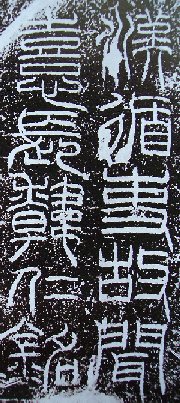
Title of Han Ren Ming |
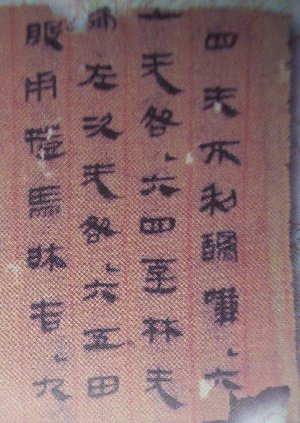
I Ching |
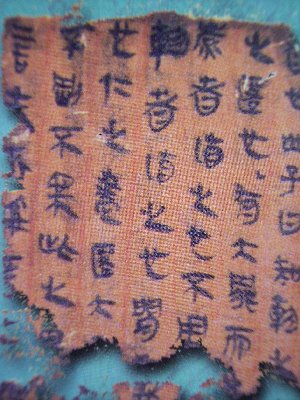
Dao Te Ching |
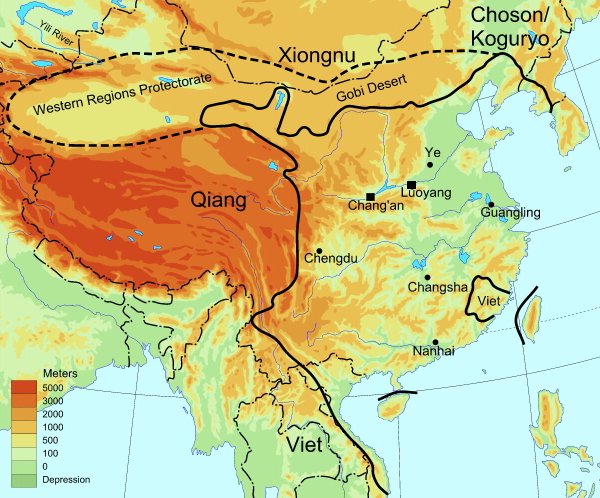
Han Dynasty Territory |
The
first blooming period of Chinese calligraphy as an art was in the Han Dynasty.
Many great calligraphers appeared in the Han Dynasty. They usually didn't sign
their names in their calligraphy works. They were very humble and were not
allured by fame and recognition. That’s why most
of the greatest calligraphy works of the Han Dynasty were by unknown
calligraphers. As they reached a very high level of art, the works in the Han
Dynasty remained to be the prototype and high standards for later calligraphers
like Wang Hsi-Chih and those in the Tang Dynasty. Those calligraphers realized
whether their names should be remembered was less important than the art itself.
Most styles were also formed and reaching their maturity in the Han Dynasty. When the West Han was established, the Prime Minister Xiao He was in charge of making the ordinances and laws. He was an officer of the late Chin Dynasty. The law required Eight Scripts “Ba Ti 八 體” to be the scripts of examinations. (Ba Ti actually was eight different scripts, including Li Shu.). Good calligraphy in the examinations would place oneself to good government position. The most useful script in Ba Ti was Li Shu ( 隸 書 ). Thus, Li Shu became the most important script to study. Throughout the 400 years of the Han Dynasty, almost all tablets were written in Li Shu. Thus, the Han Dynasty had the best Li Style calligraphy with its simplicity, structure, beauty, elegance and design. Later the Tang Dynasty was also famous for Li Style but theirs were considered the most vulgar and should not be emulated (“Lin Mo 臨 摹”) by calligraphy students.
Tsao Chuan Bei |
Shu Cheng Chien Bei |
Yi Inn Bei |
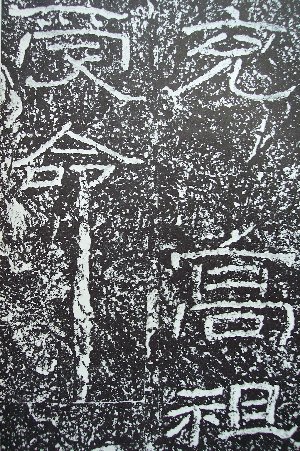
Su Meng Sung |
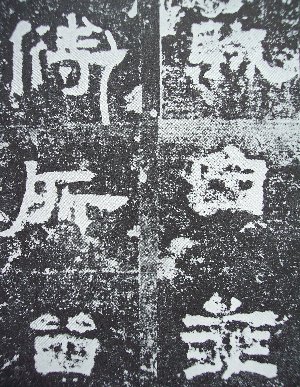
Zhang So Bei |
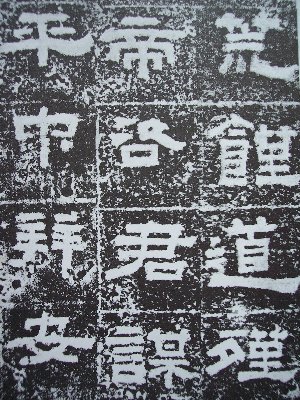
Shien Yu Huan Bei |
Calligraphy Masters in the Han Dynasty
·
Tsao Xi
曹 喜
(?-?): He was good at
Zuan Shu and Li Shu. He learned from Lee Si's calligraphy in Zuan Style but
created his own “explicit hanging needles” feature.
·
Du Du
杜 度 (?-?): He was allowed
to present reports to the Emperor Zhang in running style calligraphy. Thus his
Tsao Style was called “Zhang Tsao.” Even the King of Tsao Style, Zhang Chih,
admitted that his work was inferior to Du Du’s and Tsui Yuan’s work.
·
Tsui Yuan 崔 瑗 (77-142):
He was good at Zhang
Tsao. His book "Tsao Shu Posture 草 書 勢" was valued by later calligraphy
theorists. His Tsao Shu was not as ingenious in structures as his teacher Du Du
but was more charming than Du Du's. He was peered with Du Du.
·
Zhang Chih 張 芝 (?-193):
Won the title ”King of Tsao Shu.” He practiced calligraphy by a pond and it
became black because he washed his brushes and ink plate there. He studied Zhang
Tsao from Du Du and Tsui Yuan and then established the modern style of Tsao Shu.
He had a great influence on Wang Hsi-Chih & Hsian-Chih.
·
Tsai Yong 蔡 邕
(132-192): On
the 4th year Xi Ping, he was authorized to correct the “Six Scriptures”
(“Liu Jing”) by Emperor Ling Di of the Han Dynasty. He wrote it on a tablet
and had it carved. When the tablet “Xi Ping Shu Jing” was elected, thousands
of people came to study the calligraphy every day. When he saw workers painting
at the Hong Du Gate, he was inspired and created “Fei Bai Te” (just
different brushwork style, not different character style) with a unique visual
effect. He also played musical instruments and studied astrology.
·
Liu De-Sheng 劉 德 昇 (c. 146-189):
He was famous for the establishment (not creation) of Hsin Shu. He taught Zhong
Yao and Hu Zhao.
·
Shu
Yi-Guan 師 宜 官 (?-?): He often went to
drink without paying. He just did calligraphy show for the public and they paid
for him. He could do extra large and small characters equally well.
·
Liang Hu 粱 鵠 (?-?): His “Ba Fen 八 分” was favored by
Emperor Ling Di. Tsao Tsao (a king during the Three Kingdoms era) thought his
calligraphy was better than his teacher Shu Yi-Guan’s and he enjoyed
appreciating Liang Hu's calligraphy in his tents.